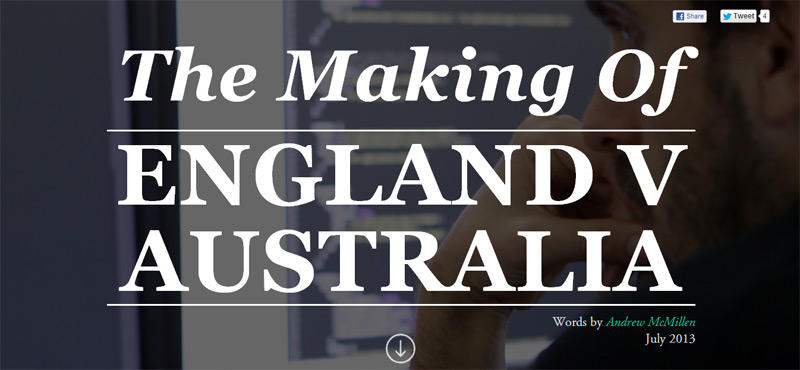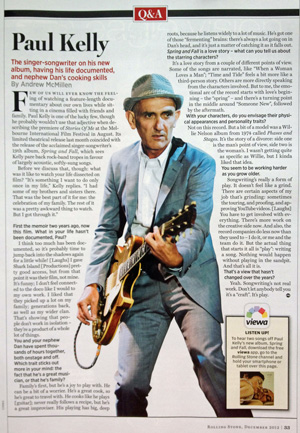Shorthand story: ‘The Making of England v Australia’, July 2013
A story for Shorthand, a Brisbane-based digital technology company. Excerpt below; click the image to read the full story.
The Making of ‘England v Australia’
The first project released by Australian digital publishing company Shorthand details one of sport’s ultimate rivalries, yet ironically, it only came to fruition after partnering with an iconic British media outlet which recently launched down under. In collaboration with the Guardian Australia, ‘England v Australia’ is a long-form interactive story that traces the history of the the two countries’ ongoing contest, which spans generations, oceans and sporting codes.
“We wanted to develop a tool that would be used by the publishing industry,” says Shorthand executive manager Ben Fogarty. “And what better way to find out what it needs to become than working with someone like the Guardian, with their experience and their approach to storytelling, news and features? It was a great opportunity to get straight into the thick of it with a very well-known, professional organisation, and see how and where Shorthand fits into that scenario.”
The Brisbane-based start-up was founded in March 2013 in recognition of a problem that had emerged in online journalism: how could publishers tell ‘epic’ stories without the requisite eye-popping budgets, labour-intensive web development, and months of lead time?
In short: how to craft an interactive masterpiece like ‘Snow Fall’ without breaking the bank each and every time? The start-up saw a gap in the market to provide a high-quality, affordable platform for digital storytellers. Although Shorthand’s goal was clear, the team still had many unanswered questions.
“‘England v Australia’ helped us define our scope very well,” says Fogarty. “We had a big question around where the content was going to come from, and how digital storytelling is crafted. Do you start with media and put text around it? Do you grab text and find the media to go with it? Being part of that process from an early stage with the Guardian Australia has helped shape in our minds how to create the product features that’d work best for telling these sorts of stories for the web.”
To read the full story – and get a better idea of the tool that the company is developing – visit Shorthand’s website.



